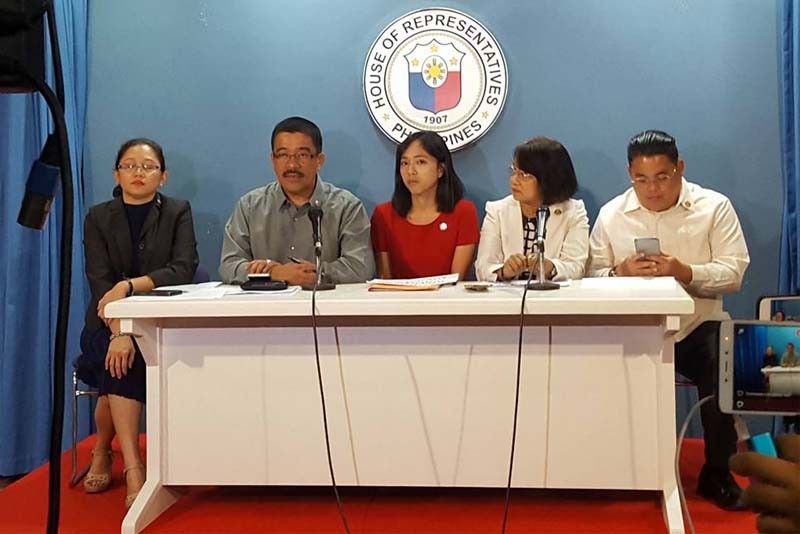Party-list abuse


A total of 134 party-lists vied for seats at the lower house in the May midterm polls. The COMELEC proclaimed 51 winning party-list groups allowing 61 party-list seats in the next Congress. Six organizations got two seats each, while 43 groups got one seat each.
This means taxpayers’ money will have to defray the expenses of operating 61 congressional seats in addition to the regular elected representatives per legislative district. How much is the budget for one seat in the House of Representatives?
Initially, the party-list system was supposed to provide the marginalized and underrepresented sectors, or organizations and parties who lack well-defined political constituencies but who could contribute to the formulation and enactment of appropriate legislation that will benefit the nation as a whole, the enabling voice to support their legislative agenda. The marginalized and underrepresented sectors include the handicapped, indigenous cultural communities, fisher folk, labor, overseas workers, peasant, urban poor and veterans.
In 2013, the Supreme Court upheld the Constitution’s intent that the party list is not only for the marginalized sectors but also for regional parties and smaller political parties, among others. However, as we all know, the system has been used by those vying for a seat in the House of Representatives but cannot run in the district elections.
On the other hand, the sectors that lack well-defined political constituencies include professionals, women, elderly and the youth. Among the midterm election winners are familiar old groups that occupied congressional seats for many years now. Since I am particularly concerned with education, I am just wondering what the party-list groups ACT TEACHER, A-TEACHER, MANILA TEACHERS, and 1-ANG EDUKASYON contributed in terms of legislation for teachers as professionals or for education in general. If these and the other party-list groups truly represented their sectors and advocacies in the past, the party-list system may no longer be relevant in crafting special-interest laws.
Now we have the Anti-Crime and Terrorism Community Involvement and Support (ACT-CIS), which topped the Party-List elections, Ang Probinsyano, Probinsyano Ako, Duterte Youth, Barangay Health Wellness, Dumper Philippines Taxi Drivers Association, Inc., Talino at Galing ng Pinoy, Public Safety Alliance for Transformation and Rule of Law, Inc., and others with amusing names.
Next elections, we might have party-lists like Samahan ng Mga Takot sa Asawa, Kampon ng Kadiliman, Red White & Blue Stars over You, or what have you. The inclusion of these groups was made possible by the Supreme Court ruling in the Atong Paglaum versus COMELEC case, where the following parameters were set: (1) Three different groups may participate in the party-list system: (a) national parties or organizations, (b) regional parties or organizations, and (c) sectoral parties or organizations; (2) National parties or organizations and regional parties or organizations do not need to organize along sectoral lines and do not need to represent any “marginalized and underrepresented” sector; (3) Political parties can participate in party-list elections provided they register under the party-list system and do not field candidates in legislative district elections.
A political party, whether major or not, that fields candidates in legislative district elections can participate in party-list elections only through its sectoral wing that can separately register under the party-list system. The sectoral wing is by itself an independent sectoral party, and is linked to a political party through a coalition; (4) Sectoral parties or organizations may either be “marginalized and underrepresented” or lacking in “well-defined political constituencies.” It is enough that their principal advocacy pertains to the special interest and concerns of their sector; (5) A majority of the members of sectoral parties or organizations that represent the “marginalized and underrepresented” must belong to the “marginalized and underrepresented” sector they represent. Similarly, a majority of the members of sectoral parties or organizations that lack “well-defined political constituencies” must belong to the sector they represent. The nominees of sectoral parties or organizations that represent the “marginalized and underrepresented,” or that represent those who lack “well-defined political constituencies,” either must belong to their respective sectors, or must have a track record of advocacy for their respective sectors. The nominees of national and regional parties or organizations must be bona-fide members of such parties or organizations; and (6) National, regional, and sectoral parties or organizations shall not be disqualified if some of their nominees are disqualified, provided that they have at least one nominee who remains qualified.
While the above guidelines made the party-list system inclusive, it appears to have been abused in practice. A rich man could now represent the poor and a lawyer could represent security guards, for as long as they claim to advocate for the sector they are not part of. The Party-list system provides additional opportunities for Political Parties to penetrate the vulnerable areas of our government and exercise power over what is seemingly a seat intended for the voiceless. In the end, those who are truly marginalized but are not at arms-length in terms of affiliation with political groups will only have an empty promise to be advocated for in government. More importantly, while it is conceded that all aspects of our fundamental laws and the societal structure will always be open to abuse, it would be the greatest injustice to turn a blind eye from such blatant exploitation that defeats the very rights for which such power is exercised. In a system where such practice is heavily engrained and where the only feasible solution is to seal a glaring loophole in our laws, to do the contrary is to disregard the values our democracy seeks to uphold.
Unless another form of government is coming, there may be a need to revisit our party-list system. The money that we could save might lessen our need for loans from China. Our legislative representatives are very much capable of pushing for the enactment of laws that would cater to the needs of the handicapped, workers, professionals, or the elderly in their respective districts. They could also effectively support non-sectoral advocacies.
So why would I need to vote two congressmen, one from my legislative district and one party-list, to represent me in congress? That would be paying two expensive public servants not to mention their entourage to do one and the same thing, that often than not, is never done at all.
- Latest
- Trending


























